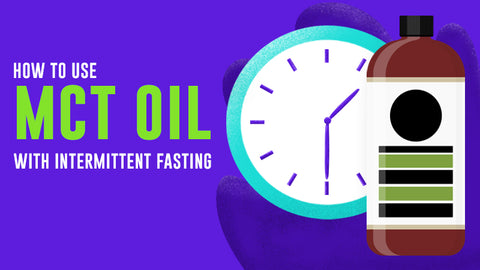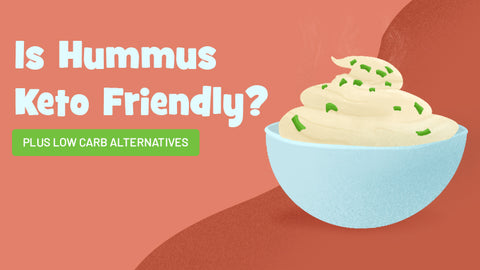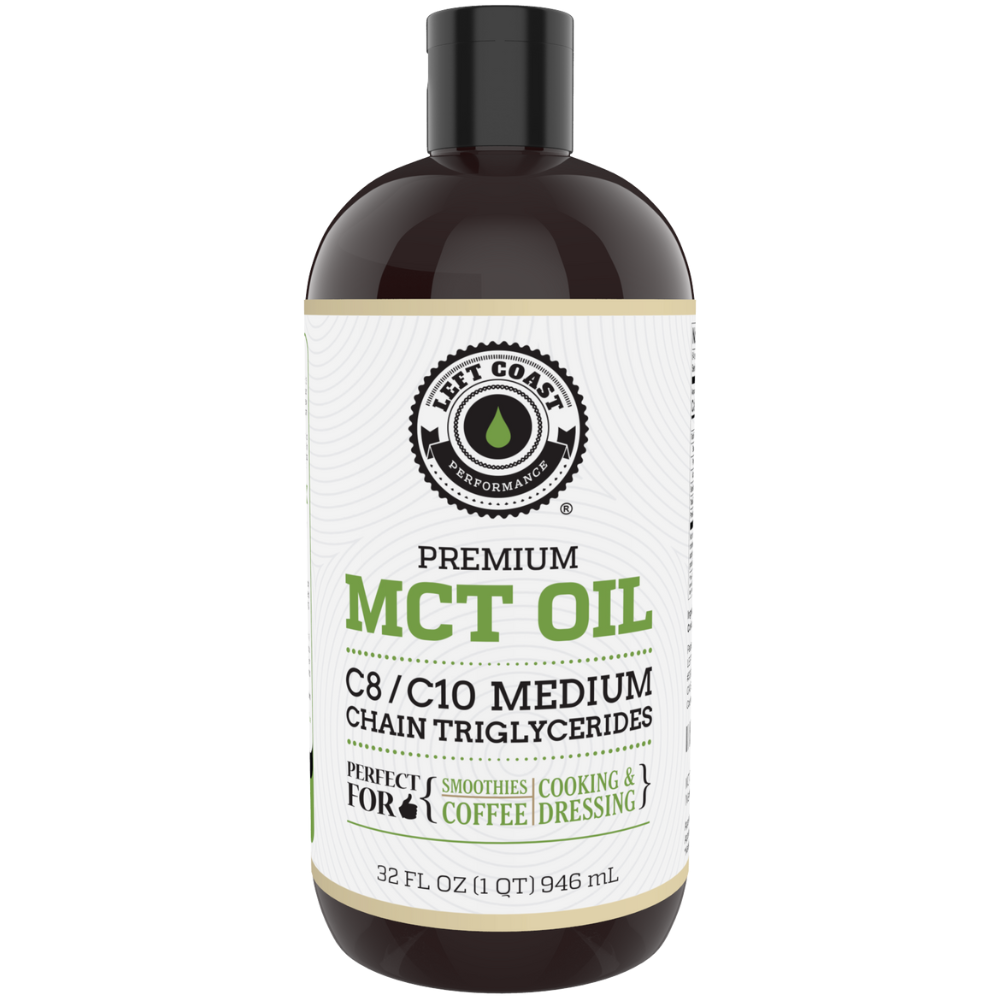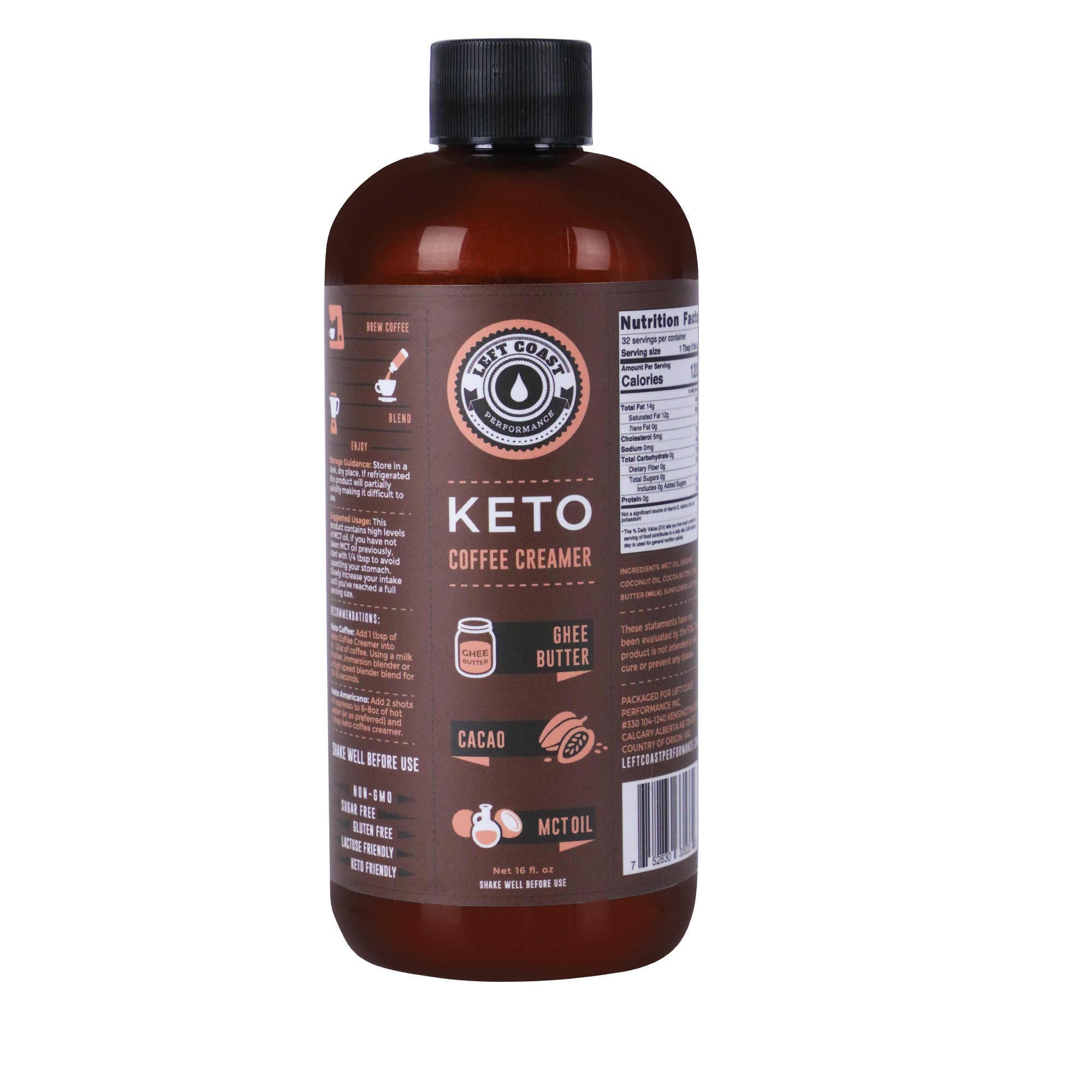Low-Carb Rice Substitutes for Delicious Keto-Friendly Meals
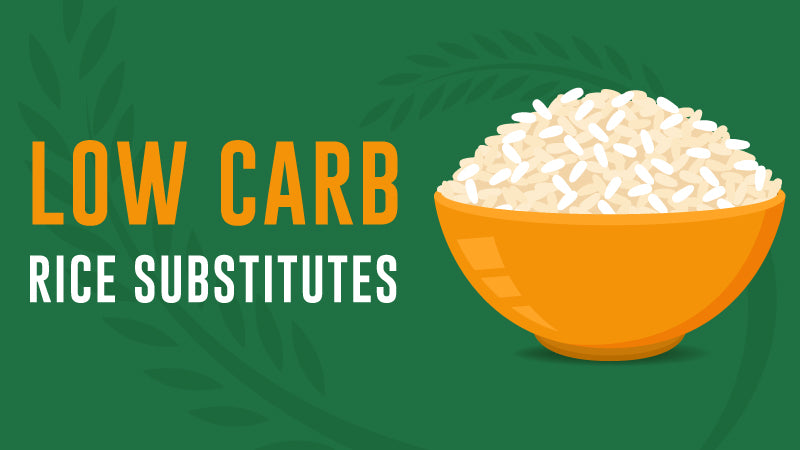
on December 10, 2019
If you’ve been looking for low-carb rice substitutes for a ketogenic diet, your search stops here.
You won’t even miss rice on a ketogenic diet when you have so many delicious low-carb rice alternatives available — The best part is they’re quick and easy to whip up on top of being a healthy alternative to rice.
Read on to learn more about why rice isn’t keto-friendly and seven delicious low-carb veggies that can serve as rice replacements — one for every day of the week.
Why Is Rice Not Keto?
Carbohydrates can be in the form of sugar or starch. Rice is almost all carbohydrate — In fact, approximately 90% of rice is starch.
One cup of cooked long-grain white rice has approximately 45 grams of carbohydrates. Since there's practically no fiber in white rice, it's all net carbohydrates.
On a keto diet, net carbs are strictly limited to approximately 5% of your daily caloric intake. Depending on how many calories you consume, this is the equivalent of 20 - 25 grams of net carbs per day.
So clearly, rice is not keto.
The starch in rice consists of glucose molecule chains. As soon as you eat your first forkful, enzymes in your mouth begin to break down the chain into individual glucose units.
Glucose is a simple sugar that is used to fuel our cells — As such, the body burns it for energy immediately after eating.
It's a fascinating and complicated process, but to put it simply...
Rice is first absorbed from your digestive tract into your bloodstream to be transported to wherever it’s needed to fuel activities from breathing to sprinting.
When your blood glucose level spikes after eating rice, your pancreas releases insulin. This hormone ushers glucose into your cells. There, it carries out some of the thousands of chemical reactions you need to stay alive every day.
Insulin is sometimes called the fat-storage hormone because its presence promotes the accumulation of fat in your cells.
When you’re on keto to lose weight, you want to minimize the amount of insulin in your blood. To do this, you'll restrict the amount of glucose you consume in your diet.
When there’s glucose present in your body, your body preferentially uses it for energy. A ketogenic diet, on the other hand, shifts your body into a fat-burning mode of energy production called ketosis.
To make the switch to ketosis and stay there, a carbohydrate-rich diet of foods like rice is a no-no. Instead, a diet consisting of mostly healthy fats is required.
To be successful on keto for weight loss, it’s important that you reduce your daily caloric intake of carbs to merely 5%. For example, on a 1,800 calorie/day diet, only 23 grams of carbs is permitted a day.
Micronutrient Content of Rice Varieties
All rice varieties are composed mostly of carbohydrates.
Which is the lowest carb rice?
The answer probably won’t surprise you.
The macronutrients in one cup cooked (without added ingredients) of several different kinds of rice are given below.
|
Rice |
Carbs (g) |
Fiber (g) |
Protein (g) |
Fat (g) |
|
44.5 |
0.6 |
4.3 |
0.4 |
|
|
51.7 |
3.2 |
5.5 |
2.0 |
|
|
46 |
1 |
4 |
- |
|
|
45 |
0.6 |
4.3 |
0.4 |
|
|
35 |
3 |
6.5 |
0.6 |
Among rice varieties, wild rice has the fewest net carbs (total carbs minus fiber) and the most protein. Although brown rice is higher in protein compared to several kinds of white rice, it's still high in net carbs.
On a keto diet, it's best to avoid all types of rice. Luckily there are plenty of low-carb rice substitutes to choose from instead.
7 Low-Carb Alternatives to Rice (Keto Friendly)
Although carb-free rice doesn’t exist, there are several low-carb alternatives to rice that are so tasty, you won't even miss rice.
The following keto friendly rice replacements will serve as a base in keto rice recipes. Along with healthy fats and moderate protein, these low-carb rice alternatives will keep you in ketosis.
All of these seven veggies are excellent in an Asian keto stir fry or risotto dishes. Try them as a side dish either roasted, fried, or steamed with your favorite spices and herbs in butter or olive oil.
1. Cauliflower Rice
Cauliflower is a low-carb vegetable known for its versatility. As a rice substitute, its fluffy and grainy texture and neutral flavor resemble rice. After enjoying cauliflower rice once, you may never eat conventional rice again!
Here’s the macronutrient breakdown of cauliflower:
|
Rice Alternative |
Total Carbs (g) |
Fiber (g) |
Protein (g) |
Fat (g) |
Net Carbs (g) |
|
Cauliflower - 1 cup (raw) |
5.3 |
2.1 |
2.1 |
0.3 |
3.2 |
Making cauliflower rice is simple — A grater is all you’ll need, but it can get messy. If you prefer, a food processor will do the work for you.
Due to its popularity, cauliflower rice is also sold as a packaged food item in most major grocery stores.
Cauliflower takes less time to cook than traditional varieties of rice — Steam, saute or roast the cauliflower bits.
There are many ways to get creative with these low-carb cauliflower bits! For instance, try adding scrambled eggs, mushrooms, and bell pepper for an Asian fried rice meal.
2. Riced Cabbage
Cabbage comes from the same Brassica family of vegetables as cauliflower, and it's another low-carb rice substitute.
A hand grater or food processor will shred the cabbage leaves to rice-sized morsels. Enjoy raw or cooked.
For your reference, here's the macros breakdown for green cabbage:
|
Rice Alternative |
Total Carbs (g) |
Fiber (g) |
Protein (g) |
Fat (g) |
Net Carbs (g) |
|
Green Cabbage - 1 cup (raw) |
5.2 |
2.2 |
1.1 |
0.1 |
3.0 |
3. Zucchini Rice
Zucchini is technically a fruit, but it's consumed like a vegetable.
To pick the best zucchini at the grocery store, look for zucchinis that are thin and 6 - 8 inches in length. It should feel heavy for its size and the dark green skin should be smooth and free from blemishes.
Grate it by hand or in a food processor until you get the size you desire.
Because of the high water content of zucchini, we recommend roasting it to dry it out. Doing so will make it more crumbly like rice.
Alternatively, an inexpensive spiralizer is an easy way to create zucchini noodles for low-carb pasta dishes.
Here’s the macronutrient breakdown for 1 cup of raw zucchini with the skin on for added nutrients:
|
Rice Alternative |
Total Carbs (g) |
Fiber (g) |
Protein (g) |
Fat (g) |
Net Carbs (g) |
|
Zucchini - 1 cup (raw with skin) |
3.9 |
1.2 |
1.5 |
0.1 |
3.0 |
4. Rutabaga Rice
If you’ve never tried rutabaga, you’ll be pleasantly surprised by how scrumptious it is. It's sometimes described as a cross between turnips and cabbage when eaten raw, with a slightly bitter flavor.
When cooked, rutabagas have a sweet yet savory flavor similar to potatoes — without all the starch.
Here is the macronutrient count for 1 cup raw rutabaga:
|
Rice Alternative |
Total Carbs (g) |
Fiber (g) |
Protein (g) |
Fat (g) |
Net Carbs (g) |
|
Rutabaga - 1 cup (raw) |
12.1 |
3.2 |
1.5 |
0.2 |
8.9 |
For people concerned about sugar intake, the carbohydrates in rutabagas include 6.2 g of sugar (not just starch).
The sugar in rutabaga is in the form of sucrose and fructose as well as glucose.
The sucrose portion of rutabaga is broken down by your body during digestion into glucose and fructose.
Of the 12.1 g of total carbohydrates in rutabaga, only 8.9 g count toward your net carb intake for the day. If you’re restricting net carbs to 5% of your daily caloric intake while on a ketogenic diet (about 20 - 25 g per day), a cup or two of rutabaga rice would work fine in your keto meal plan.
By contrast, the other keto rice substitutes mentioned in this article have no or merely negligible sugar content. They are mostly all starch.
Ultimately, all starch in any food is broken down into the simple sugar, glucose.
All glucose — whether from starch or sugar — can cause a spike in your blood glucose level. To avoid glucose spikes, limit the number of carbs you consume at one sitting.
You can dampen the effects of glucose spikes by consuming fat and protein at the same time you enjoy carbs.
To prepare rutabaga, dice or shred it in a food processor then saute in butter or coconut oil.
5. Broccoli Rice
In the same cruciferous family as cauliflower, broccoli is a great rice replacement without the carbs.
Hand grate or pulse in a food processor to the desired size. Roast, steam, or saute. Raw rice broccoli in a garden salad works, too!
Broccoli is a low-carb vegetable loaded with micronutrients to boot. For a macros rundown for raw broccoli:
|
Rice Alternative |
Total Carbs (g) |
Fiber (g) |
Protein (g) |
Fat (g) |
Net Carbs (g) |
|
Broccoli - 1 cup (raw) |
4.8 |
1.8 |
2.0 |
0.3 |
3.0 |
6. Mushroom Rice
For a non-vegetable keto alternative to rice, try mushrooms. There are over 2,000 mushroom varieties that are edible and/or medicinal.
The macronutrient content varies considerably from each type of mushroom. For example, portabella mushrooms have high carb content while white buttons are high in protein. Maitake mushrooms have a higher percentage of fiber compared to other types.
Research into mushrooms indicates that some varieties are anti-obesity agents. Oyster mushrooms are known to help control blood glucose levels.
Dice mushrooms into tiny bits and saute in butter and seasoning. Then toss them into a side of broccoli or cauliflower rice. Tasty!
The umami (meaty) flavor of some mushroom types will contribute to the robust taste sensations of your keto meals with these low-carb rice replacements.
In fact, mushrooms are popular choices on a keto diet since they’re so low in net carbs. For instance, in one cup of raw white (button) mushrooms:
|
Rice Alternative |
Total Carbs (g) |
Fiber (g) |
Protein (g) |
Fat (g) |
Net Carbs (g) |
|
White Button Mushrooms - 1 cup (raw) |
2.3 |
0.7 |
2.2 |
0.2 |
1.6 |
Note: Macros will vary depending on the mushroom variety.
7. Butternut Squash Risotto
If you enjoy risotto rice dishes, you’ll love keto-friendly creamy butternut squash risotto so much you won’t even notice that there’s no rice in it.
Blend boiled butternut squash until it’s in tiny chunks, fine bits, or smooth and creamy. It depends entirely on your preference.
Here is the macronutrient composition of butternut squash:
|
Rice Alternative |
Total Carbs (g) |
Fiber (g) |
Protein (g) |
Fat (g) |
Net Carbs (g) |
|
Butternut squash- 1 cup (raw) |
16.4 |
2.8 |
1.4 |
0.1 |
13.6 |
Note: This rice alternative is higher in net carbs than others on this list.
FAQs On Low Carb Substitutes For Rice
Here are some frequently asked questions and answers related to rice, cereals, and grains on a ketogenic diet.
Is brown rice lower carb/keto friendly?
Brown rice is not lower in carbs compared to white rice.
According to the United States Department of Agriculture Food Central database, one cup of cooked long-grain brown rice contains 51.7 grams of carbohydrates and 3.2 grams of fiber.
Net carbs in brown rice is calculated as:
Net carbs = total carbs minus fiber: 51.7 g - 3.2 g = 48.5 g.
By comparison, one cup of cooked long-grain white rice contains 44.5 grams of carbohydrate but only 0.6 grams of fiber.
Net carbs in white rice is calculated as:
Net carbs = total carbs minus fiber: 44.5 g - 0.6 g = 43.9 g.
From this comparison, brown rice actually contains more net carbs than white rice!
Neither brown or white rice is keto friendly.
Is quinoa a good alternative to rice?
Quinoa is not a good alternative to rice when you’re on a ketogenic diet because it is high in net carbs.
For one cup of this cooked “pseudo-cereal,” so-called because it’s neither a true cereal or grain, here is the macros breakdown for quinoa:
|
Rice Alternative |
Total Carbs (g) |
Fiber (g) |
Protein (g) |
Fat (g) |
Net Carbs (g) |
|
Quinoa - 1 cup |
39.4 |
5.2 |
8.1 |
3.6 |
34.2 |
On a strict keto diet, net carbs should not be more than 5% of your total caloric intake. This is the equivalent of 20 - 25 grams of net carbs per day.
One cup of cooked quinoa surpasses this daily net carb limit since it has 34.2 grams.
Are ancient grains good as low-carb alternatives to rice?
Ancient grains are loosely defined as grains that have not ever been genetically altered or are only minimally changed. These include spelt, teff, millet, and amaranth.
Although ancient grains have more grams of protein than an equivalent amount of rice, all of these grains contain large amounts of carbohydrates and so are not low-carb alternatives to rice.
Here are the net carb values of one cup of the following cooked grains:
|
Grain |
Total Carbs (g) |
Fiber (g) |
Net Carbs (g) |
|
29.4 |
3.9 |
25.5 |
|
|
50 |
7.1 |
42.9 |
|
|
41.2 |
2.3 |
38.9 |
|
|
46 |
5.2 |
40.8 |
From this table, it’s clear that ancient grains are not keto friendly because they have high amounts of net carbs.
If you consider spelt to be lower carb, eating just one cup of it in a day will make it impossible to eat any other carbs from vegetables and remain in ketosis.
Keto Rice Alternatives Summary
All regular rice varieties are not keto friendly because their net carb content is too high.
If you wish to remain in ketosis, limit your daily caloric intake of net carbs to 5%. On a gram basis, this works out to about 20 - 25 grams of net carbs per day.
There are many low-carb rice alternatives that resemble rice in texture and size such as cauliflower or mushroom rice.
Unlike rice, these keto rice substitutes will help you stay in ketosis. If you’re on a low-carb diet for weight loss, you should continue shedding pounds when you replace rice with the seven whole foods listed here.


